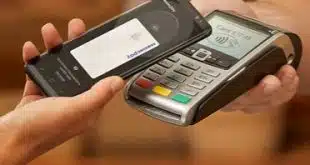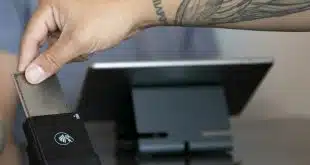By Jim Daly
B is back. That is, what the Federal Reserve Board back in 2011 dubbed “Alternative B” for implementing the transaction-routing requirements in the Dodd-Frank Act’s Durbin Amendment. Alternative B would have required each debit card to provide the merchant access to at least two signature and two PIN-debit networks with each transaction. Instead, the Fed went with the simpler plan it called Alternative A, which said the existing signature network on the front of the card was OK if the card also provided access with each transaction to at least two unaffiliated PIN-debit networks.
But, in a decision that shocked the payments industry last week, the U.S. District Court in Washington, D.C. overturned the Fed’s entire Durbin Amendment rule, not just the arcane transaction-routing aspects but also the interchange price cap on transactions involving debit cards from issuers with more than $10 billion in assets. The court essentially said the Fed did not follow the will of Congress. In addition to indicating that the interchange cap of 21 cents plus 0.05% of the transaction was too high, the court said that Alternative A didn’t jibe with the dictates of the Dodd-Frank statute.
The Fed could appeal the decision—it hasn’t said yet what it will do—and in any case it could be months or longer before card networks, merchant acquirers and issuers know what they will need to do. But as of today, there’s a good chance that Alternative B, or something similar, could become the law of the land.
Implementing Alternative B could be a big job for merchant acquirers such as Princeton, N.J.-based Heartland Payment Systems Inc., which services more than 100,000 small and mid-sized merchants as well as a big portfolio of gas stations/convenience stores and other national merchants. “I think that certainly the view that was very widespread in the acquiring industry two-plus years ago, when the Fed was considering this, was that the challenges associated with multiple signature debit bugs on one card was a mind-boggling aspect,” says Heartland vice chairman Robert H.B. Baldwin Jr.
Regarding Alternative A, Baldwin adds: “I think everybody was pretty much comfortable that that was sensible.”
In 2010, when Congress passed Dodd-Frank, many banks and credit unions had exclusive debit relationships with networks, especially with market leader Visa Inc., in which their cards accessed only the Visa network for signature authentication and the Visa-owned Interlink network for PIN authentication. Durbin outlawed such exclusive network affiliations. In its commentary about its pending rules, the Fed said merchants favored Alternative B, but it acknowledged the operational issues for card issuers and others in the payment industry.
“Alternative A would minimize the compliance burden on institutions, particularly small issuers that might otherwise be adversely affected by a requirement to have multiple networks for each method of debit card authentication,” the draft commentary said. “Alternative A would also present less logistical burden on the payment system overall as it would require little if any re-programming of routing logic by issuers, networks, issuer processors, and acquirers.”
But is Alternative B as onerous as it initially seemed? Baldwin suggests perhaps not. As evidence, he cites Visa’s PIN-Authenticated Visa Debit (PAVD) program. Through the VisaNet network, PAVD enables Visa to process a PIN-debit transaction even if the card the customer presents doesn’t carry the Interlink logo. PAVD is one part of Visa’s debit recovery strategy in the post-Durbin environment, which saw Interlink lose more than half its volume during the quarter when the Fed’s routing rules took effect in April 2012.
“Until Visa told us that was a capability they had, none of us knew it existed,” says Baldwin. “That certainly gets you thinking: exactly how separate are these [authentication] systems and how hard would it be? Something we thought was a different silo wasn’t so much of a different silo.”
Visa declined comment about the recent court ruling. The company’s debit business is on the rebound, however. Visa recently reported that Interlink’s volume jumped 25% in the third fiscal quarter ended June 30 from Durbin-reduced year-earlier levels. At the same time, a major rival of Interlink’s, the Pulse electronic funds transfer network owned by Discover Financial Services, saw volume drop 3%, a decline Discover chief executive David Nelms suggested was the result of competitive pressure from Visa.
Another issue raised by the court decision is the further complication of an already complicated problem, implementing the Europay-MasterCard-Visa chip card standard in the U.S., which all the major networks are pushing. But Visa and MasterCard own the core technology, and the EFT networks, led by the Secure Remote Payment Council (SRPc) group, are trying to forge an agreement about a common application identifier (AID) that would enable all chip debit cards to meet the Durbin Amendment’s routing requirements.
It looked like they were getting close to a solution late last month when the SRPc suggested a compromise to Visa and MasterCard. The court decision adds yet another impetus to resolve the issue because of the potential requirement for cards to access more networks.
“From an EMV perspective I think it reinforces the need for an AID and a common application—that’s really the best way for all networks to provide the technology and the greatest flexibility,” says Terry Dooley, senior vice president and chief information officer for the Johnston, Iowa-based Shazam EFT network. “What makes it difficult today is utilizing intellectual property from specific business organizations.”
In a statement issued Wednesday, the ATM Industry Association, a trade group of retail ATM operators, highlighted the uncertainty roiling the debit world in the wake of the district-court ruling and various network deadlines that are shifting liability for fraudulent transactions to parties that don’t accommodate EMV.
“This decision could completely stall progress toward development of the debit solutions necessary for the vast U.S. EMV migration,” said David Tente, the ATMIA’s USA executive director. “With one liability shift passed and others looming in the near future, we’re already seeing that the court’s action has created a heightened level of confusion in the industry.”




